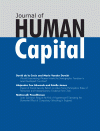WomenÃÂs heterogeneous preferences regarding work and family are the main determinants of female employment patterns in liberal, modern societies (Hakim, 1991; Hakim, 2000; Hakim, 2006). Catherine Hakim argues that the emergence of a ÃÂnew scenarioÃÂ concurrent with other tenets of preference theory, has resulted in constraint free societies whereby choice becomes the dominant explanation for the changes in employment patterns. A longitudinal study, using quantitative data interpreted by Hakim, reveals heterogeneous preferences of women, which can be grouped in to three categories: ÃÂhome-centredÃÂ, ÃÂwork-centredÃÂ and ÃÂadaptiveÃÂ (Hakim, 2000:6). Within these categories the characteristics demonstrated by the women, remain stable over time. The heterogeneity of womenÃÂs preferences result in less coherence and a lack of conformity in relation to the development of social policy, a factor enabling the continuity of a patriarchal society supporting homogeneous men. This review will investigate trends in female employment patterns, in conjunction with HakimÃÂs preference theory, identifying contrasting literature illustrating the limited applicability of the theory to liberal, modern societies, the instability of preferences over time, and the relevance of the theory to men.
Women are heterogeneous in their priorities on ÃÂwork-life conflictÃÂ and choice thereafter, as identified later in employment patterns (Hakim 2000:7). Polarization of female employment patterns intensifies with each generation and heterogeneous preferences are stable across the entire lifecycle. Hakim identifies three preference groups: ÃÂhome centredÃÂ, ÃÂwork centredÃÂ and ÃÂadaptiveÃÂ. ÃÂHome centredÃÂ women account for approximately 20%* of all women, characteristically their family life and children are consistently prioritized and as a consequence, these women prefer not to work. They are also responsive to social and family policies. Hakim controversially claims that this group of women obtain educational qualifications solely as ÃÂintellectual dowryÃÂ (Hakim, 2000:6). Diametrically opposed ÃÂwork centredÃÂ women prioritise employment, they commit solely to work or equivalent activities, make larger investments...


